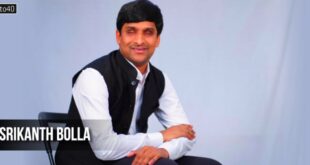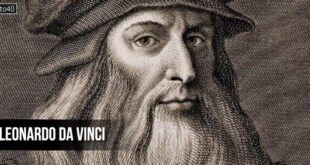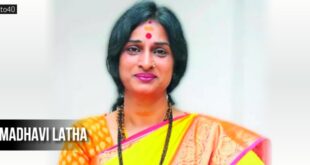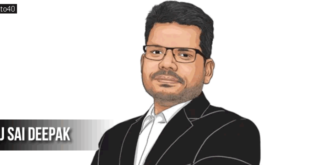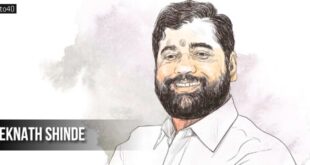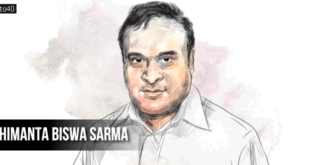Bill Gates — Gates was born in Seattle, Washington, to William H. Gates, Sr. and Mary Maxwell Gates, of English, German, and Scotch-Irish descent on October 28, 1955. His family was upper middle class. His father was a prominent lawyer, his mother served on the board of directors for First Interstate BancSystem and the United Way, and her father, J. W. Maxwell, was a national bank president. Gates has one elder sister, Kristi (Kristianne), and one younger sister, Libby. He is also known William Gates III or “Trey”. Gates’ parents had a law career in mind for William.
At 13 he enrolled in the Lakeside School, an exclusive preparatory school. When he was in the eighth grade, Gates took an interest in programming the GE system in BASIC and was excused from math classes to pursue his interest. He wrote his first computer program on this machine: an implementation of tic-tac-toe that allowed users to play games against the computer. Gates was fascinated by the machine and how it would always execute software code perfectly. At age 17, Gates formed a venture with Allen, called Traf-O-Data, to make traffic counters based on the Intel 8008 processor. In early 1973, Bill Gates served as a congressional page in the U.S. House of Representatives.
Gates graduated from Lakeside School in 1973. He scored 1590 out of 1600 on the SAT and enrolled at Harvard College in the autumn of 1973. While at Harvard, he met Steve Ballmer, who later succeeded Gates as CEO of Microsoft. Gates devised an algorithm for pancake sorting as a solution to one of a series of unsolved problems, presented in a combinatorics class by Harry Lewis, one of his professors. Gates’ solution, which was later formalized in a published paper in collaboration with Harvard computer scientist Christos Papadimitriou, held the record as the fastest version for over thirty years, its successor is faster by only one percent. Gates remained in contact with Paul Allen, joining him at Honeywell during the summer of 1974. The following year saw the release of the MITS Altair 8800 based on the Intel 8080 CPU, and Gates and Allen saw this as the opportunity to start their own computer software company. He had talked this decision over with his parents, who were supportive of him after seeing how much Gates wanted to start a company.
After reading the January 1975 issue of Popular Electronics that demonstrated the Altair 8800, Gates contacted Micro Instrumentation and Telemetry Systems (MITS), the creators of the new microcomputer, to inform them that he and others were working on a BASIC interpreter for the platform. MITS president Ed Roberts agreed to meet them for a demo, the demonstration, held at MITS’s offices in Albuquerque, was a success and resulted in a deal with MITS to distribute the interpreter as Altair BASIC. Paul Allen was hired into MITS, and Gates took a leave of absence from Harvard to work with Allen at MITS in Albuquerque in November 1975. They named their partnership “Micro-Soft” and had their first office located in Albuquerque. Within a year, the hyphen was dropped, and on November 26, 1976, the trade name “Microsoft” was registered with the Office of the Secretary of the State of New Mexico. Gates never returned to Harvard to complete his studies.
During Microsoft’s early years, all employees had broad responsibility for the company’s business. Gates oversaw the business details, but continued to write code as well. In the first five years, he personally reviewed every line of code the company shipped, and often rewrote parts of it as he saw fit.
In 1980, IBM approached Microsoft to write the BASIC interpreter for its upcoming personal computer, the IBM PC. When IBM’s representatives mentioned that they needed an operating system, Microsoft delivered PC-DOS in exchange for a one-time fee of $50,000. Gates did not transfer the copyright on the operating system, because he believed that other hardware vendors would clone IBM’s system. They did, and the sales of MS-DOS made Microsoft a major player in the industry.
Gates oversaw Microsoft’s company restructuring on June 25, 1981, which re-incorporated the company in Washington state and made Gates President of Microsoft and the Chairman of the Board.
Microsoft launched its first retail version of Microsoft Windows on November 20, 1985, and in August, the company struck a deal with IBM to develop a separate operating system called OS/2. Although the two companies successfully developed the first version of the new system, mounting creative differences undermined the partnership. Gates distributed an internal memo on May 16, 1991, announcing that the OS/2 partnership was over and Microsoft would shift its efforts to the Windows NT kernel development.
From Microsoft’s founding in 1975 until 2006, Gates had primary responsibility for the company’s product strategy. He aggressively broadened the company’s range of products, and wherever Microsoft achieved a dominant position he vigorously defended it. Gates’s role at Microsoft for most of its history was primarily a management and executive role. However, he was an active software developer in the early years, particularly on the company’s programming language products. He has not officially been on a development team since working on the TRS-80 Model 100 line, but wrote code as late as 1989 that shipped in the company’s products. On June 15, 2006, Gates announced that he would divide his responsibilities between two successors, placing Ray Ozzie in charge of day-to-day management and Craig Mundie in charge of long-term product strategy so that he can dedicate more time to philanthropy.
Since leaving Microsoft, Gates continues his philanthropy and, among other projects, purchased the video rights to the Messenger Lectures series called The Character of Physical Law, given at Cornell University by Richard Feynman in 1964 and recorded by the BBC. In April 2010, Gates was invited to visit and speak at the Massachusetts Institute of Technology where he asked the students to take on the hard problems of the world in their futures.
Gates married Melinda French from Dallas, Texas on January 1, 1994. They have three children: daughters Jennifer Katharine Gates (born 1996) and Phoebe Adele Gates (born 2002), and son Rory John Gates (born 1999). The Gates’ home is an earth-sheltered house in the side of a hill overlooking Lake Washington in Medina.
Gates’s private collection includes the Codex Leicester, a collection of writings by Leonardo da Vinci, which Gates bought for $30.8 million at an auction in 1994. Gates is also an avid reader, and the ceiling of his large home library is engraved with a quotation from The Great Gatsby. He also enjoys playing bridge, tennis, and golf.
Gates was number one on the “Forbes 400” list from 1993 through to 2007 and number one on Forbes list of “The World’s Richest People” from 1995 to 2007 and 2009. He founded Corbis, a digital imaging company, in 1989. In 2004 he became a director of Berkshire Hathaway, the investment company headed by long-time friend Warren Buffett. In March 2010 Bill Gates was bumped down to the 2nd wealthiest man behind Carlos Slim.
In 1994 sold some of his Microsoft stock to create the William H. Gates Foundation. In 2000, Gates and his wife combined three family foundations into one to create the charitable Bill & Melinda Gates Foundation, which is the largest transparently operated charitable foundation in the world. As of 2007, Bill and Melinda Gates were the second most generous philanthropists in America, having given over $28 billion to charity.
Honors and Recognitions
In 1987 Gates was officially declared a billionaire in the pages of Forbes’ 400 Richest People in America issue, just days before his 32nd birthday. As the world’s youngest self-made billionaire, he was worth $1.25 billion, over $900 million more than he’d been worth the year before, when he’d debuted on the list.
Time magazine named Gates one of the 100 people who most influenced the 20th century, as well as one of the 100 most influential people of 2004, 2005, and 2006. Time also collectively named Gates, his wife Melinda and U2’s lead singer Bono as the 2005 Persons of the Year for their humanitarian efforts. In 2006, he was voted eighth in the list of “Heroes of our time”. Gates was listed in the Sunday Times power list in 1999, named CEO of the year by Chief Executive Officers magazine in 1994, ranked number one in the “Top 50 Cyber Elite” by Time in 1998, ranked number two in the Upside Elite 100 in 1999 and was included in The Guardian as one of the “Top 100 influential people in media” in 2001.
In 1994, he was honoured as the twentieth Distinguished Fellow of the British Computer Society. Gates has received honorary doctorates from Nyenrode Business Universiteit, Breukelen, The Netherlands, in 2000, the Royal Institute of Technology, Stockholm, Sweden, in 2002, Waseda University, Tokyo, Japan, in 2005, Tsinghua University, Beijing, China, in April 2007, Harvard University in June 2007, the Karolinska Institutet, Stockholm, in January 2008 and Cambridge University in June 2009. He was also made an honorary trustee of Peking University in 2007. Gates was also made an honorary Knight Commander of the Order of the British Empire (KBE) by Queen Elizabeth II in 2005, in addition to having entomologists name the Bill Gates flower fly, Eristalis Gatesi, in his honor.
In November 2006, he and his wife were awarded the Order of the Aztec Eagle for their philanthropic work around the world in the areas of health and education, particularly in Mexico, and specifically in the program “Un país de lectores”. In October 2009, it was announced that Gates will be awarded the 2010 Bower Award for Business Leadership of The Franklin Institute for his achievements in business and for his philanthropic work. In 2010 he was honored with the Silver Buffalo Award by the Boy Scouts of America, its highest award for adults, for his service to youth.
 Kids Portal For Parents India Kids Network
Kids Portal For Parents India Kids Network
